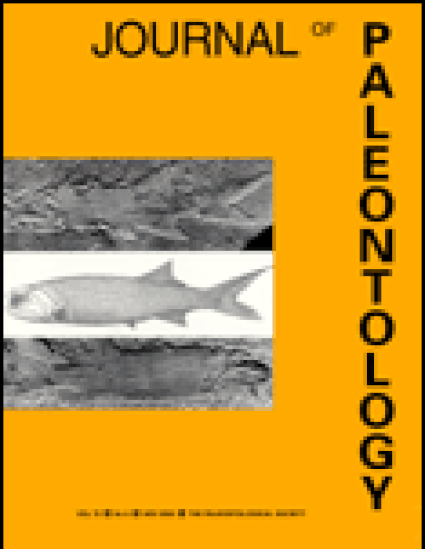
Article
Age and Generic Assignment of Yabeina Columbiana (Guadalupian Fusulinacea) in Southern British Columbia
Journal of Paleontology
(2007)
Abstract
The morphologic variation in Yabeina columbiana (Dawson) was carefully studied using probable topotype specimens from the Marble Canyon-Hat Creek area, southern British Columbia, and the material was compared with related species of neoschwagerinids from various parts of the circum-Pacific region. In the five Marble Canyon-Hat Creek samples examined, we found considerable individual variation in important characters, such as the size of the proloculi, and shape and development of primary and secondary transverse septula in relation to the growth stage of the test. These differences gradually changing from specimen to specimen within and among samples are thought to represent intraspecific variation within this species. Wide individual variations are also found in three different species of Yabeina from Japan, Yabeina sp., Y. kaizensis (Huzimoto), and Y. globosa (Yabe).
Most North American species of Yabeina, such as Yabeina columbiana, have morphological features such as the occurrence of primary and secondary transverse and axial septula in later whorls and the average size of proloculi that reasonably place them as early species in the genus Yabeina. Yabeina columbiana is neither a Lepidolina nor a Colania as some authors had previously thought. Evolved forms of Neoschwagerinidae in the western Cordillera of North America consist of Yabeina cordillerensis Ross, Y. cascadensis (Anderson), Y. columbiana (Dawson), Y. packardi Thompson and Wheeler, and Lepidolina dunbari (Skinner and Wilde).
The earliest North American Yabeina is thought to be Y. cordillerensis from northwestern British Columbia where it is associated with Afghanella sp., Pseudodoliolina sp., and the Wordian ammonoid Waagenoceras. This assemblage is closely comparable to that in the lowest zone of the Midian Stage in the Tethyan realm, the Afghanella robbinsae and Yabeina archaica Zone. The remainder of the known North American Cordilleran species of Yabeina are assignable to the second zone of the Midian Stage, the Yabeina globosa and Lepidolina multiseptata Zone and to the Japanese Yabeina globosa Zone. This zone is considered equivalent to the Capitanian Stage at the top of the Guadalupian Series in southwestern North America. Morphological and faunal analyses of these North American Cordilleran species of Yabeina and Lepidolina and most of the associated species of schwagerinids (for example, Chusenella andersoni, C. atlinensis, and Schwagerina pavilionensis) suggest ages that range through the late Guadalupian. The highest zone of the Tethyan Midian lacks Yabeina and other neoschwagerinids and is based on the ammonoids Eoaraxoceras and Anderssonoceras. This zone is found in sediments of post-Capitanian (post-Guadalupian) age in northern Mexico.
Keywords
- Yabeina columbiana
Disciplines
Publication Date
March, 2007
Publisher Statement
Published by: Paleontological Society
Stable URL: http://www.jstor.org/stable/4133777
Citation Information
Charles A. Ross, Fumio Kobayashi and June R. P. Ross. "Age and Generic Assignment of Yabeina Columbiana (Guadalupian Fusulinacea) in Southern British Columbia" Journal of Paleontology Vol. 81 Iss. 2 (2007) p. 238 - 253 Available at: http://works.bepress.com/charles-ross/83/
